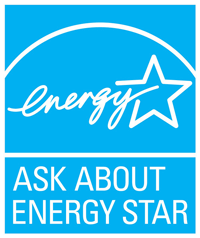
Ceiling fans are one of the most overlooked ways to enhance comfort and reduce energy costs. By enhancing air circulation and supporting your HVAC system, ceiling fans and energy efficiency are truly a perfect combination. They offer a smart, energy-efficient way to stay cool while lessening strain on your AC—helping you avoid unnecessary air conditioning repair.
In this blog, the experts at J.L. Brady Company LLC break down how ceiling fans can keep you cool while saving you money thanks to increased HVAC efficiency. We'll also offer some HVAC efficiency tips that put to good use ceiling fans.
Comfort vs. Temperature: Staying Cool Using the Wind-Chill Effect Indoors
Ceiling fans don’t actually cool the air—they cool you down by increasing air movement across your skin. This is called the wind-chill effect, and it can make a room feel up to 4 degrees cooler without lowering the thermostat. That means you remain cool and enjoy the benefits of indoor air circulation from your ceiling fan while minimizing air conditioner use—helping reduce your electric bill in summer.
The Best of Both: Advantages of Pairing Fans and Air Conditioning Together
There are several benefits to using ceiling fans and air conditioning together, especially when it's very hot outside. By using both, you maximize HVAC efficiency and keep your home cooler with less effort from your cooling system.
Why you should use ceiling fans and AC together:
- Ceiling fans help lower HVAC load by circulating cool air more evenly around the room. Decreasing HVAC stress is important, because it can save you from a breakdown that may lead to premature AC or furnace installation.
- Using ceiling fans improves your indoor comfort by eliminating hot spots and enhancing circulation.
- Pairing ceiling fans and AC can cut energy consumption. If you have a home automation system, you can even fine-tune your smart thermostat settings to increase the temperature slightly while your ceiling fan is running.
Clockwise vs. Counterclockwise Ceiling Fan Rotation: What Direction to Spin in Summer and Winter?
To make full use of your ceiling fans year-round, it’s important to make sure the blades rotate in the right direction for the season. The direction influences how air circulates, which can either or redistribute heat so you feel warmer.
When to rotate ceiling fans counterclockwise
On hot days, ceiling fans should turn counterclockwise at a quick speed. This creates a breeze that pushes cool air downward, enhancing the wind-chill effect and creating a cooler sensation.
When it's best to spin ceiling fans clockwise
On cold days, set your fan to turn clockwise on a slower speed. This gently pulls cool air upward and pushes warm air near the ceiling down toward you, so you feel warmer without adjusting your thermostat.
Things to Look for in a Ceiling Fan
Picking the best ceiling fan depends on a few critical considerations, such as blade design, airflow rating and room dimensions. First, look for fans with a good combination of ECFM airflow and blade pitch to provide efficient air circulation in your space:
- ECFM is how much air a fan pushes—the cubic feet per minute, or CFM—per watt of electricity consumed. Fans with higher ECFM are more energy efficient.
- Blade pitch refers to the incline of the blades. A steeper blade pitch moves more air than a shallower pitch but can also put extra load on the motor.
Also, consider room size when sizing a ceiling fan—a fan that’s too small won’t move as much air as you'd like, while one that’s too big may be disruptive in a smaller room.
Increase Your HVAC Efficiency With Help from J.L. Brady Company LLC
At J.L. Brady Company LLC, our HVAC specialists can help you stay comfortable while easing the burden on your heating and cooling systems. From efficient ceiling fan strategies and air conditioning installation to smart thermostats and furnace repair, we offer comprehensive services that fit your lifestyle. Reserve your appointment by calling 309-865-5564 today.




